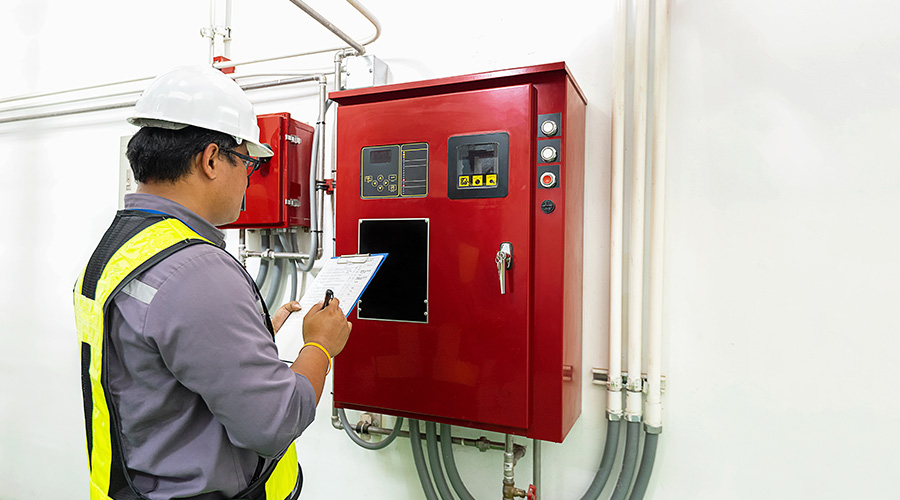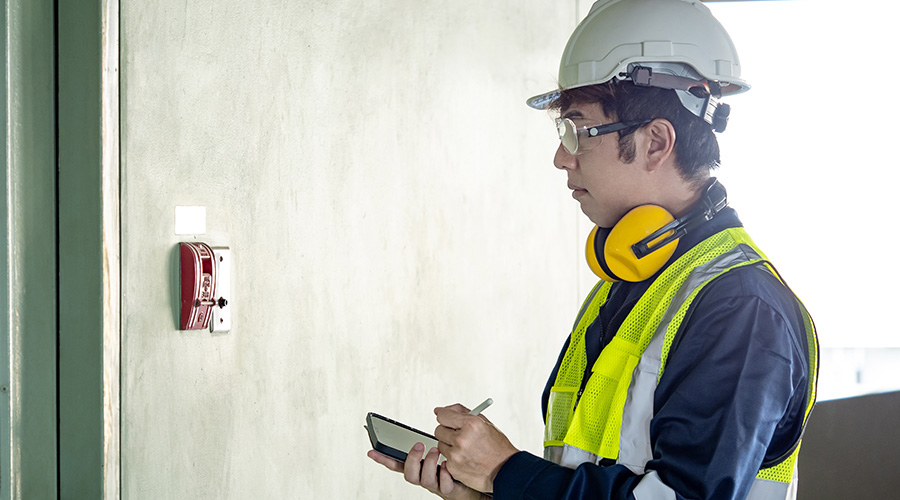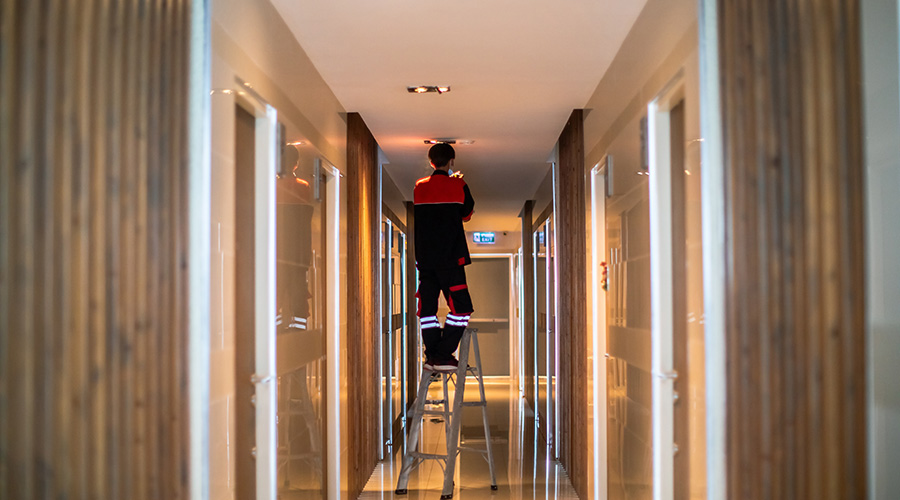Strengthening Building Safety: Upgrading Life Safety Equipment for Modern Needs
It is also important to ensure your life safety system continues to meet the needs of your facility.
There are a number of reasons a building may be ready for upgraded life safety equipment. The most common example would be that the equipment no longer works, or it is too old. This would be determined during testing or based on how the code is written.
“The way the code is structured is once a device is put in as long as it tests appropriately, the inspection and test that required performs adequately, you can use it forever,” says Rietz. “There's actually no forced upgrade inside the code … As long as the equipment is working and is testing appropriately, you can keep it in service.”
There are a few devices out there that do have a true end of life. Carbon monoxide detectors, for example, had a lifespan of five years when they first came on the market. Technology advanced that lifespan to seven years, and the detectors on the market today are at 10 years.
“It's not the code making you do it, but the device simply dies,” says Rietz. “It has a little electrochemical element inside and it breaks down, and after 10 years, it just doesn't work anymore. “
Sprinklers are another example of equipment that has a set lifespan. Though a significantly longer lifespan, sprinklers that are older than 75 years old must be replaced no matter what, even if they are working correctly.
Facility managers also may decide to upgrade their system based on their annual budget. Rather than waiting for a piece of equipment to fail, many facility managers choose to replace equipment on a planned schedule. This not only saves money in the long run but prevents an emergency situation.
“A planned replacement of a system or components of a system can cost up to half what an emergency replacement costs,” says Rietz. “Once the device breaks, you're forced to do it. And if you can imagine if your fire alarm control unit goes down … that gets very, very expensive quickly.”
Rietz notes that understanding the end of life of your system is critical from a budgetary standpoint. He recommends facility managers work with their local fire departments toward planned or phased replacements to not only save money but avoid an emergency situation.
“Most of them will work with you and do that, but once it breaks, you have to fix it. There's no budget that's going to protect you from that,” says Rietz.
It is also important to ensure your life safety system continues to meet the needs of your facility. If your business operations change, it is possible your fire safety equipment may need to be changed as well.
“The commodities market is constantly changing,” says Hugo. “A facility that might have stored mayonnaise in glass jars 10 years ago is now storing mayonnaise in plastic jars in cardboard boxes. To most people it's just mayonnaise, but to the fire protection world, that mayonnaise in a plastic jug has a different fire property, different fuel loading than that mayonnaise in the glass jar.”
These types of changes can be easy to miss but are an important part of understanding your facility and the equipment that makes it safe.
Technology upgrades
Because the life safety world is heavily regulated by codes, it has been slow to adopt new technology. Unlike your iPhone that can change every month, every piece of life safety equipment must go through lengthy regulatory approvals. And while the rate of adoption is slow, innovation is still abundant.
A range of advanced and smart technologies has emerged in the last few years with the idea of making it easier for managers. Driven by the Internet of Things, more connected devices are available than ever before, which allow facility managers to maintain and monitor their systems with less interface and less work.
“Instead of some of the older technologies we've used in the past, most of the major manufacturers are using IP based networking,” says Rietz. This means facility managers are able to use a mobile device and app to access reports and communicate with the devices within their building.
“They can see what's going on with their fire alarm system on an app versus walking over to the panel and pushing buttons,” says Rietz. “They can see things when they are not even on site.”
There have also been interesting advances in the fire sprinkler world, a piece of equipment that hasn’t seen a lot of change in the last 50 years. Wireless communication is making it possible for sprinklers to undergo self-testing with waterflow switches that test themselves. A circular pump inside the sprinkler shows that water is flowing in the pipe without having to dump a bunch of water in the ground.
Advances in self-testing smoke detectors are growing as well. These devices introduce a small amount of smoke and heat into the chambers to test the sensors.
Strobes, speakers and horns are also seeing advancements with upgraded LED lights, smart notifications, and an emphasis on energy efficiency.
“We are seeing technology expansion, and it's kind of just starting to take root,” says Rietz. “There’s a lag in the life safety industry, but it's finally getting into the codes and is becoming accepted.”
Amy Wunderlin is a freelance writer based in Fort Atkinson, Wisconsin.
Related Topics:













